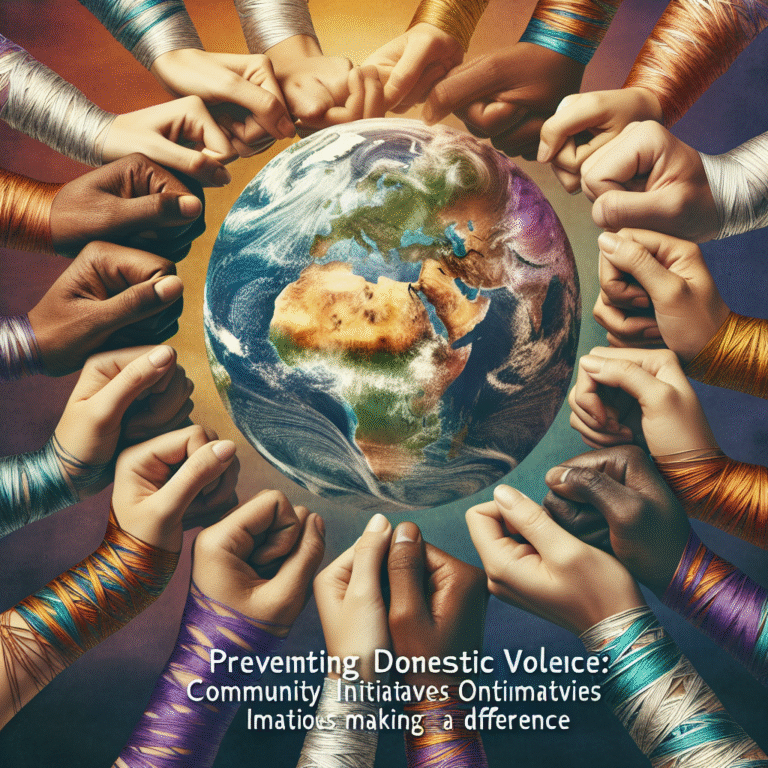
Introduction
In our increasingly interconnected world, the Internet serves as both a vast resource and a potential minefield. While it opens doors to knowledge, connection, and opportunities, it also harbors threats that can manifest in various forms. Among these threats, online predators stand out as particularly alarming. Understanding "The Digital Danger: How to Recognize and Respond to Online Predators" is not just crucial for safeguarding ourselves but also for protecting our loved ones, especially children and teenagers.
In recent years, we have witnessed a surge in cases involving online exploitation, deceit, and manipulation. This reality necessitates a proactive and informed approach to recognizing and responding to these dangers. By exploring essential strategies, notable case studies, and actionable insights, we can shed light on this pervasive issue and equip ourselves to navigate the digital landscape more safely.
Understanding Online Predators
What Are Online Predators?
Online predators are individuals who use the Internet to exploit, manipulate, or harm vulnerable users, particularly children and teenagers. They may engage in grooming behaviors, where they earn a young person’s trust with the intent to sexually exploit them or involve them in illegal activities.
Case Study: The Role of Social Media
In 2017, a 15-year-old girl attracted the attention of an online predator through her social media profile. This particular predator spent months building rapport with her, eventually convincing her to share personal images. The case exemplifies not only the vulnerability of minors online but also the deceitful lengths to which offenders may go.
The Nature of Online Predation
Online predators can operate through various channels, including social media, dating apps, online games, and chat rooms. They often employ tactics such as:
- Grooming: Slowly building trust with the target to manipulate them.
- Deceit: Using false identities to mislead victims.
- Coercion: Applying pressure or threats to achieve desired compliance.
Recognizing these tactics is the first step in staying vigilant against "The Digital Danger: How to Recognize and Respond to Online Predators."
Identifying the Signs of Online Predation
Behavioral Changes in Victims
Friends and family should be on the lookout for sudden changes in behavior in their loved ones. Signs may include:
- Increased secrecy regarding online activities.
- A decline in academic performance.
- Changes in social circles or friendships.
- Significant shifts in mood, such as anxiety or depression.
Table: Warning Signs of Online Predation
| Warning Signs | Description |
|---|---|
| Secrecy | Withholding information about online interactions |
| Mood Swings | Sudden emotional changes or withdrawal |
| Social Isolation | Reduced interaction with family and peers |
| Inappropriate Online Behavior | Engagement with adult content or conversations |
Creating a Safe Online Environment
Educational Strategies
Education is one of the most effective ways to combat online predation. Parents, guardians, and educators should consider the following strategies:
-
Open Communication: Encourage open dialogue about online experiences. Children should feel safe discussing any encounters that make them uncomfortable.
-
Digital Literacy: Teach children the importance of privacy settings, recognizing suspicious behavior, and differentiating between healthy and unhealthy online interactions.
- Role-Playing Scenarios: Engaging young people in role-playing exercises can help them practice how to respond to potential threats or awkward situations.
Case Study: The Lessons from Schools
In an initiative led by a school district in California, educators implemented a program focusing on digital literacy. Students underwent workshops aimed at recognizing online dangers and trusted adults’ importance. As a result, reporting of suspicious encounters increased by over 50%, showcasing the effectiveness of education in mitigating "The Digital Danger: How to Recognize and Respond to Online Predators."
Empowering Victims
Responding to Encounters with Predators
Victims of online predation may experience fear or shame that prevents them from seeking help. It’s vital for victims to know how to respond:
- Do Not Engage: Advise individuals to disengage from communication with the predator immediately.
- Document Evidence: Keep records of interactions, including screenshots, usernames, and dates, to report to authorities.
- Report to Platforms: Encourage reporting to the social media or gaming platform where the interaction took place. Most platforms have procedures to handle abusive behavior.
Legal Protections and Resources
Understanding the Law
Lawsuits against online predators have shaped how we view and handle these cases. Several legal frameworks exist to protect victims:
- Child Exploitation Prevention Act: Establishes severe penalties for the exploitation of minors.
- Cyberbullying Legislation: Many states have implemented laws addressing online harassment, creating avenues for victims to seek relief.
Chart: Legal Responses to Online Predation by State
| State | Legal Framework | Year Enacted |
|---|---|---|
| California | Child Exploitation Prevention Act | 2006 |
| New York | Cyberbullying Law | 2010 |
| Texas | Online Predation Laws | 2015 |
How to Teach Kids About Online Safety
Developing Information Resources
It’s not enough to tell children to stay safe; they must understand how. Consider the following resources:
- Online Safety Workshops: Schools and community centers often offer programs aimed at teaching children about safe Internet use.
- Parent-Child Contracts: Setting clear rules around Internet use can foster accountability and understanding.
Case Study: Tech Camp Success
In a pilot program in Ohio, a summer tech camp focused on digital safety resulted in enhanced awareness among participants, leading to increased parental involvement in monitoring online activities.
Conclusion
Navigating the digital world requires both courage and caution. Understanding "The Digital Danger: How to Recognize and Respond to Online Predators" is essential in fostering a safe online environment for ourselves and our loved ones. By recognizing warning signs, engaging in open dialogue, and utilizing available resources, we can create a proactive approach to combat the perils of online predation.
While the digital realm presents challenges, it is our responsibility to empower ourselves and educate future generations to remain vigilant and resilient. Together, we can transform the narrative surrounding online safety from fear to informed action.
FAQs
-
What should I do if I suspect someone is being targeted by an online predator?
- Speak to them compassionately, encourage open dialogue, and report any suspicious activity to relevant authorities.
-
Are online predators primarily male?
- While many reported cases involve male offenders, both sexes can engage in online predation.
-
How can I protect my child’s privacy online?
- Use privacy settings on social media accounts, monitor online interactions, and have discussions regarding the importance of sharing personal information.
-
What legal actions can be taken against online predators?
- Victims can report the offender to law enforcement; civil lawsuits may also be an option depending on the situation.
- Are there hotlines I can call for help or advice?
- Yes, many organizations provide support for victims of online predation, including the National Center for Missing & Exploited Children (NCMEC).
By staying informed and proactive, we can navigate the digital world with confidence and resilience, ensuring that we and our loved ones remain safe from "The Digital Danger: How to Recognize and Respond to Online Predators."


















